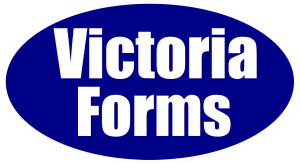Enables newly submitted forms to be converted into a variety of formats for export to document workflow systems.
Document Image Systems are used by organisations to replace the storage and access of paper forms. Paper forms (as well as letters, documents, photocopies, etc.) received by the organisation must be digitally scanned. Each form image is then indexed and cross-referenced. Form images, rather than the original paper documents are then accessed by staff as the virtual documents pass through various stages of administration.
Such systems vastly reduce the amount of paper used, and greatly speed up administration. They are also important for archiving and can be retrieved years or even decades into the future.
It should be noted that, although back-office processing systems are able to automate many aspects of the administration of the form using captured data alone, human staff often do much of the interpretation and decision making required for administering each form. Therefore, staff need to be able to see the information the client has provided clearly. Therefore an image of a form with a familiar conventional appearance is often essential for an organisation using E-form processes.
Unlike conventional Internet Forms, our E-forms can be identical on screen to paper forms. They can be printed with high and consistent quality and can therefore be scanned manually into a document system if required.
Where there is high volume of submissions, Victoria Forms supplies an additional module – The Document System Integrator. This add-on for the Enterprise Forms Server facilitates the conversion of completed forms into an image file, which is then exported directly to the Document System, bypassing the need for paper and manual scanning.
Each form in the library is configured separately, either to be exported automatically on final submission, or when initiated by an administrator, allowing members of staff to view the form before it is exported if they need to.
The system handles the conversion of the form into a range of image formats, including PDF, TIFF, JPG and PNG. It then deals with the link-up to the document system where Enterprise Forms Server monitors each stage of the export – initiation, queuing, conversion, transfer, and confirmation. If there is any difficulty during any stage of the export – due to a network error, for example – this system identifies the problem and informs the appropriate administrator.
Highly Reliable Conversion: The export occurs with load balancing. In busy periods the release of files for conversion is paced, so that the server never gets overwhelmed.
Any Victoria E-form can be exported to PDF, Tiff, etc without any additional design work. If the form design changes, the converted forms will change as well – there is no separate design process.
Our integrator can handle thousands of page conversion per hour, without any loss of speed on the server. Where the system is to deal with many thousands of page conversions per hour, the server can easily be configured to share the load with parallel servers.
The image of the form stored is identical in appearance to the form filled on screen. Retrieval of a form image, months, years or even decades later will show exactly what the user saw when they filled in the form. This is far more useful than a traditional archive of data only, particularly where evidence of fraudulent activity is presented to a court – you cannot be certain what the user saw when they filled in the form months/years earlier.
Each form can be configured to be converted with pages removed (e.g. redundant help information pages), and their order changed – e.g. official use pages can appear at the very front of the form.
For faster indexing the front page can display the basic information about a case (client name, address, National insurance number, etc). The member of staff doing the indexing will not have to search through the form for this information.
Since each form can be configured separately, forms from the same library can be routed to different department document systems.
Where the user signs on screen directly or uses a stylus on their signature pad, their signature will appear on the signed pages of the form image. Form processes that require a signature can therefore be a 100% paper free transaction from end-to-end.
Photo evidence taken by digital camera or using a scanner, to accompany forms can be converted into a suitable format and sent to the document system. This occurs at the same time as the export to the document system and both form and evidence are treated as part of one “job”. Images may be sent as individual attached files, or incorporated as new pages of the form image.
The Alternatives?
Conventional internet forms capture data using simple HTML forms. These cannot be converted directly into an image format such as PDF. Instead, a designer creates an underlying blank form template matching the design of the original paper form. A programmer then manually codes the coordinates and dimensions of each blank field on the form template. During conversion, software takes data captured on the conventional internet form and then positions it in these coded fields on the new template.
Such designing and programming work is slow, laborious, and prone to error. Some recent UK government projects have cost upwards of £5,000 per page for this procedure.
Adding to the expense, the created template will have to be redesigned every time a form is amended.
Furthermore, taking data from one form and presenting it in another form which was designed separately, suffers from serious issues of integrity. The receiving template may suffer such issues as:
Victoria Forms software is unique in its ability to overcome these issues.



